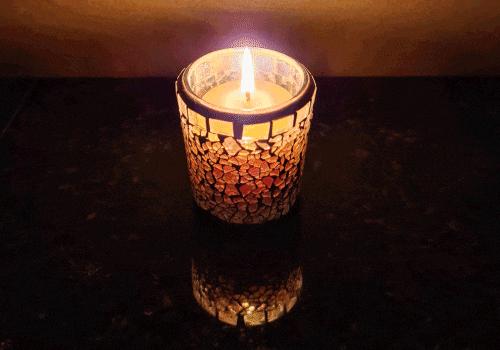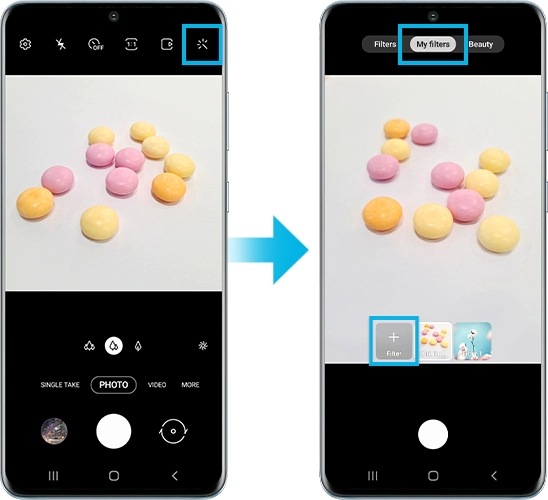Check out the new camera functions of Galaxy S20 | S20+ | S20 Ultra
The cameras in the Samsung Galaxy S20 series are equipped with a completely new camera system, which are simple to use and include new features to further enhance video and selfie technology.
With one single take, you can create photo clips of every moment, and use the advanced zoom feature to capture a shot that is hundreds of feet away. The new camera technology also offers enhanced low-light photography, for shooting outside in the evening.
Compare camera specifications
All of the Galaxy S20 series has a single camera on the front, completing the design of the Bezelless smartphone, but it doesn't necessarily give up performance and functionality. The S20 Ultra is equipped with a 40MP camera lens to give it an "Ultra" look.
The differences in the camera amongst the Galaxy S20 series is in the rear. The S20 has a rear triple camera, while the S20+ and S20 Ultra have quad cameras. In addition, DepthVision cameras measure the distance between the camera and the object to help sharpen portraits and AR (augmented reality).

|
Galaxy S20 |
Galaxy S20+ |
Galaxy S20 Ultra |
|
|---|---|---|---|
|
Front Camera |
10MP Selfie |
10MP Selfie |
40MP Selfie |
|
12MP Ultra Wide |
12MP Ultra Wide |
12MP Ultra Wide |
|
Wide-angle Camera |
12MP Wide-angle |
12MP Wide-angle |
108MP Wide-angle |
|
Telephoto Camera |
64MP Telephoto |
64MP Telephoto |
48MP Telephoto |
|
ToF Camera |
- |
*DepthVision |
*DepthVision |
Note: *DepthVision camera is a Time of Flight (ToF) camera that can judge depth and distance to take your photography to new levels.
100x space zoom(S20 Ultra only)
The vast display featured in the Galaxy S20 series has the same resolution as the Quad HD + 3200 x 1440, although models vary in size. The 120 Hz refresh rate of the Galaxy S20 series operates in Full HD + 2400 x 1080 mode, while the Quad HD + 3200 x 1440 resolution runs at 60 Hz.
Galaxy S20 and Galaxy S20+ support up to 3x Hybrid optical zoom and up to 30x Super Resolution Digital Zoom, while the Galaxy S20 Ultra offers 10x Hybrid optical zoom and 100x Super Resolution Digital Zoom. Although it is true that digital zoom is not used in real life due to image quality deterioration problem, it is obvious that the 100x Super Resolution Digital Zoom shows a clear difference from other products.

Brighter, clearer Night mode
The new Galaxy S20 Series also enables the ability to capture bright and vivid picture even in low-light conditions. Larger sensor size allows for more light at night.
Night mode and HDR (High Dynamic Range) even allow you to get the right brightness and darkness. The pictures taken in night mode are captured more clearly and brightly.

Customize my camera filter
The Galaxy S20 series can extract various color filters from images and apply them to your original photo and even recolor the picture with it. It allows you to create your own special photos.
When you want to take a picture with an effect that you admire, just save an image into the Gallery app and the AI of the Galaxy S20 series will extract the color filter based on the filter database.
Step 1. Open the Camera app and tap the Filter icon located at the upper right-side of the screen. Once you tap it will lead you to the next screen where you can view My filters.
Step 2. Tap the (+) button to create a new filter, and the Gallery app in your phone will open.

Step 3. Tap Pictures or Albums to find the photo that contains the filter you want.
Step 4. After tapping the photo, it will appear as a thumbnail. Tap the name of the filter to rename it and Save to add it.

Note:
- To remove the filter, hold down on the created filter and then tap Delete.
- Your filters can also be organized by tapping and holding or dragging them into a different order.
- Available settings and screens may vary by wireless service provider, software version, and device.
Thank you for your feedback!
Please answer all questions.





